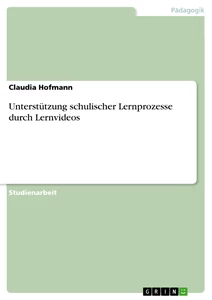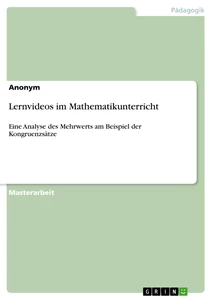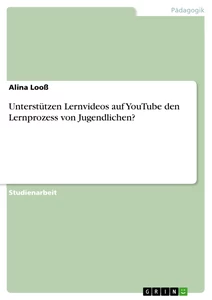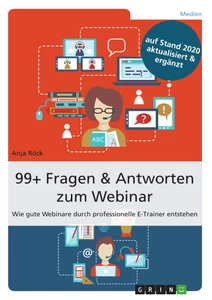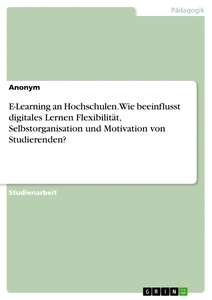<b>[openpublishing template="presentation" get_by_id="937801"] : </b></br>https://api.openpublishing.com/resource/v2/document.937801[:basic,non_academic.realm_genres.*]&cache=yes
<b>[openpublishing template="presentation" get_by_id="516676"] : </b></br>https://api.openpublishing.com/resource/v2/document.516676[:basic,non_academic.realm_genres.*]&cache=yes
<b>[openpublishing template="presentation" get_by_id="300770"] : </b></br>https://api.openpublishing.com/resource/v2/document.300770[:basic,non_academic.realm_genres.*]&cache=yes
<b>[openpublishing template="presentation" get_by_id="594313"] : </b></br>https://api.openpublishing.com/resource/v2/document.594313[:basic,non_academic.realm_genres.*]&cache=yes
First things first:
- Videos present learning content in a concise and straightforward way.
- With videos, you can learn at your own pace.
- Videos can quickly become overwhelming as topics are often covered rapidly.
Educational videos are typically less than twenty minutes long, offering explanations for specific questions or problems in specialized fields. They aim to convey knowledge and are ideally designed following didactic principles. Available online, they can be accessed anytime and from anywhere.
We’ll show you the key characteristics of educational videos, what sets them apart, and what makes a good educational video.
What Are the Characteristics and Potential of Educational Videos?
In a nutshell
Most educational videos are very short, often under ten minutes. This is partly due to the significant time required for production (especially for live-action videos) and the limited attention span of online users.
Combining Visuals and Audio
Live-action videos, featuring real people and objects, provide a realistic depiction of reality, making them highly engaging. Animations, on the other hand, achieve the same for invisible processes and abstract content. For young people in particular, it is often easier to understand complex processes, actions, and events when they are illustrated with images and sound. Purely text-based learning content can be made more engaging by incorporating graphics, animations, sound, and spoken language. When used effectively, these multimedia elements can significantly enhance understanding.
Learning at Your Own Pace
All the information presented in a video is transient, constantly being replaced by new content. This makes video an ideal medium for pausing, speeding up, or skipping to different sections. The start-and-stop function, in particular, allows users to adjust the pace of content consumption to match their personal learning speed. It also provides the opportunity to take notes calmly before continuing with the video.
Motivation is Everything…
The portrayal of people and emotions in videos can foster empathy and motivate learners. It’s no surprise, then, that videos have become the preferred learning medium among young people.
… But So Is Concentration
One of the biggest drawbacks of videos is that learners tend to engage with them superficially and exert less mental effort compared to reading a text. This often results in retaining less information than initially assumed. The high density of information can feel overwhelming, while rapid, short cuts or frequent scene changes can cause confusion, negatively impacting information processing. Even graphics and animations can become distractions if they do not directly support the learning content.
What to Do About Questions of Understanding?
Depending on the platform where educational videos are provided, there is often little to no active support for learning difficulties or questions of understanding. This means there is typically no interaction between the video creators and the users, which can hinder learning progress. Additionally, video creators may not be able to fully account for differences in the prior knowledge of their audience.
In summary, videos can present learning content in an engaging and motivating way. However, it’s important to see them as an opportunity rather than a sole learning method. Videos that do not directly support what you are currently learning, or animations that deviate from the video’s topic, can distract from the core content and hinder your learning process.
You might also be interested in these articles:
What Makes a Good Educational Video?
Content
How does a video have to be designed so that you can learn effectively with it? In a study conducted by the University of Leipzig in 2015, it was found that students rate the technical-design (formal) criteria of instructional videos as more important than content aspects. The focus is on criteria such as the quality of presentation, professionalism and length of an instructional video, while the content focuses on the topic, the wealth of information and the comprehensibility.
Instructional videos should have a specific objective, such as imparting knowledge or motivating learners. In order to achieve this goal and to promote the understanding, processing and remembering of learning content, they should adhere to some didactic criteria. The following questions play a role in this: Has the learning content been peer-reviewed? Does the video focus on the essentials or are there distracting factors? Are there descriptive graphics or animations for more complex issues? Is everything explained at an appropriate pace? Is attention specifically drawn by graphic elements? And does the instructional video manage to increase learning motivation?
The icing on the cake, especially for educational videos used at universities, is their ability to encourage active and sustainable learning. Videos that are supplemented with additional learning resources can motivate learners to engage more deeply with the content. Examples include tasks and exercises suggested within the video (e.g., finding similar examples, answering guiding questions), as well as automated tests to monitor learning progress. Interactive elements can also be highly beneficial. For instance, a video might be paused at specific points for test questions, resuming only once the correct answer is provided. A discussion forum to address open questions is another valuable addition, ensuring learners are not left to navigate the content entirely on their own.
Technical and Design Aspects
Professional educational videos should align with the viewing habits of learners and meet certain standards. If a video is too long for effective learning (10 minutes is a good benchmark, though this can vary depending on the topic), viewers may lose interest and stop watching prematurely. Additionally, both video and audio quality must be consistent, and text overlays should remain on screen long enough before transitioning to the next segment.
In Summary: Is Learning with Videos Truly Effective?
Not every educational video enhances learning and success, but it’s clear that well-designed, didactic videos can effectively support the learning process. The content must be easy to understand, and the video should be structured to focus attention on key aspects. Complementary resources, such as tasks, exercises, and tools for tracking progress, are particularly helpful, as they encourage users to engage actively with the material.
One of the biggest challenges is maintaining learner motivation. This is best achieved with concise videos that stay on topic. Educational videos are especially effective for explaining and illustrating complex processes that are harder to grasp without a temporal or spatial context. Additionally, moving visuals tend to capture attention more effectively than plain text.
Finally, we have summarized the advantages and disadvantages of learning with videos for you:
Advantages
- Accessible anytime and anywhere with an internet connection, often free of charge.
- Wide range of topics, offering extensive educational opportunities, especially on platforms like YouTube.
- Customizable use: Users select their preferred learning content, helping to avoid under- or over-challenging themselves—this boosts motivation and learning performance.
- Related videos encourage further exploration of the subject matter.
- Often presented in a humorous and friendly tone, creating a positive learning atmosphere.
Disadvantages
- Often lacks interaction with video creators or tutors.
- On some platforms, anyone can upload educational videos, but sufficient expertise is not always guaranteed—resulting in highly variable video quality.
- Learners often engage with videos superficially, retaining less information than they might expect.
- High information density can feel overwhelming, and animations can be distracting if used improperly.
- YouTube is primarily an entertainment platform, where educational content is secondary—educational videos can easily get lost in the mix.
Unsere Buchempfehlungen zum Thema:
Sources:
- Support for school learning processes through learning videos | GRIN
- Learn with videos.
- Do educational videos on YouTube support the learning process of young people?
- https://www.uni-rostock.de/storages/uni-rostock/UniHome/Weiterbildung/KOSMOS/Lehrvideos.pdf
- https://www.e-teaching.org/etresources/pdf/erfahrungsbericht_2015_bischof_mehner_videos_in%20_der_hochschullehre.pdf (study by the University of Leipzig, as of 2015)
- https://www.rat-kulturelle-bildung.de/fileadmin/user_upload/pdf/Studie_YouTube_Webversion_final.pdf (Survey on the use of cultural education offers at digital cultural venues, as of 2019)
Frequently Asked Questions
Yes, educational videos can be highly effective when they are well-designed with didactic principles in mind. They offer the ability to present complex content in an engaging way and allow learners to proceed at their own pace. Visual and auditory learners, in particular, benefit from the combination of visuals and sound.
A good educational video is characterized by a clear structure, a focused and comprehensible presentation of content, and professional technical execution. It should ideally be no longer than 10 minutes to maintain attention and should incorporate didactic elements such as graphics, animations, and test questions in a targeted manner.
One disadvantage is that learners often tend to engage with videos superficially, which can hinder information retention. Additionally, the lack of opportunity to ask direct questions can make the learning process more challenging.
Do you like our magazine? Then sign up for our GRIN newsletter now!


